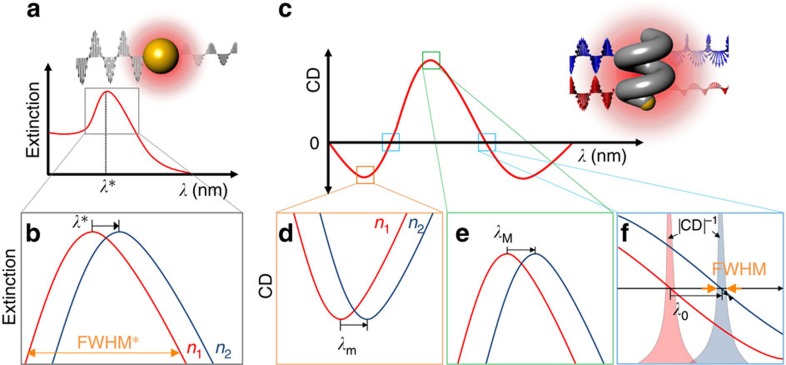Figure 1. Chiral plasmonic sensing.
(a,b) Schematic view of conventional plasmonic sensing. (a) The plasmonic resonance of the metallic nanoparticle as a function of λ. Inset shows a conventional plasmonic sensing system where a metallic nanoparticle (here a sphere) interacts with light and generates a detectable absorption peak due to plasmon resonance. (b) A zoomed-in region near the peak λ showing how it shifts in wavelength as the refractive index of the surrounding medium changes n1<n2. (c–f) Schematic view of polarization-dependent chiral plasmonic sensing. (c) The CD spectrum of a plasmonic enantiomer as a function of λ. Inset scheme illustrates the interaction of a left-handed nanohelix with circularly polarized light. Three bottom panels indicate the resonance shifts at (d) λm, (e) λM and (f) λ0 where the refractive indices of the surrounding media are varied between n1 and n2.

